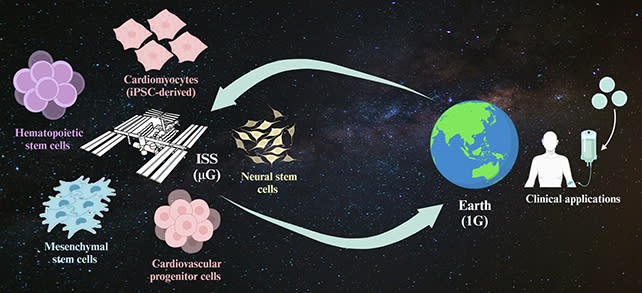Stem cells are special in the way they can keep on replicating, and turn themselves into many other types of cell. Now scientists have discovered how their superpowers get a remarkable boost when they’re grown in space.
The microgravity environment increases some of the regenerative capacities of stem cells even further, researchers from the Mayo Clinic in Florida have found, based on experiments carried out on the International Space Station (ISS).
As stem cells play such a crucial role in the body’s repair process, with their ability to quickly replicate and differentiate, these findings could help in the study of disease prevention and treatment.

“Studying stem cells in space has uncovered cell mechanisms that would otherwise be undetected or unknown within the presence of normal gravity,” says pathologist Abba Zubair, from the Mayo Clinic.
Advertisement
Advertisement
“That discovery indicates a broader scientific value to this research, including potential clinical applications.”
On board the ISS, the team specifically looked at the behavior of adult stem cells, which are more limited in how they divide and transform compared to embryonic stem cells. Adult stem cells are often grown outside the body by scientists to study and treat disease, but it’s a challenging, time-consuming, and expensive process.
What this study shows is that space labs could solve some of these issues. A variety of stem cell types were tested, with positive results for all of them: mesenchymal stem cells (MSCs), for example, were shown to be better at managing immune system responses and reducing inflammation when grown in microgravity.

For several of the stem cell types tested, the scientists observed general improvements in the way the cells were expanding, and in the stability of their replication, even after their return to Earth. There’s lots more work to do here, but the potential is there to grow stem cells in greater numbers and more quickly in microgravity.
Advertisement
Advertisement
“The space environment offers an advantage to the growth of stem cells by providing a more natural three-dimensional state for their expansion, which closely resembles growth of cells in the human body,” says Zubair.
“That’s in comparison to the two-dimensional culture environment available on Earth that is less likely to imitate human tissue.”
Ordinarily, our adult stem cells are up to the job of managing normal wear and tear on the body. However, when something goes wrong an extra infusion of lab-grown cells can make all the difference – as numerous emerging therapies have shown.
The team behind the research is also confident that space-grown cells will help in the treatment of conditions related to growing older, including strokes, cancer, and neurodegenerative diseases like dementia.
Advertisement
Advertisement
More in Science
“The space research conducted so far is just a starting point,” says Zubair. “A broader perspective about stem cell applications is possible as research continues to explore the use of space to advance regenerative medicine.”
The research has been published in NPJ Microgravity.
Related News
EMEA Tribune is not involved in this news article, it is taken from our partners and or from the News Agencies. Copyright and Credit go to the News Agencies, email news@emeatribune.com Follow our WhatsApp verified Channel




